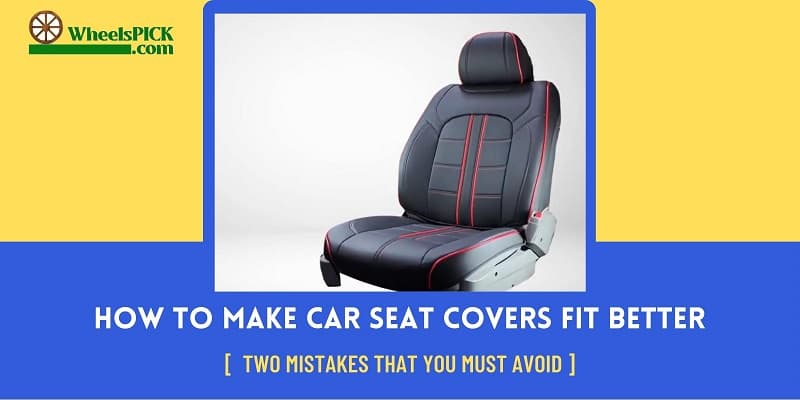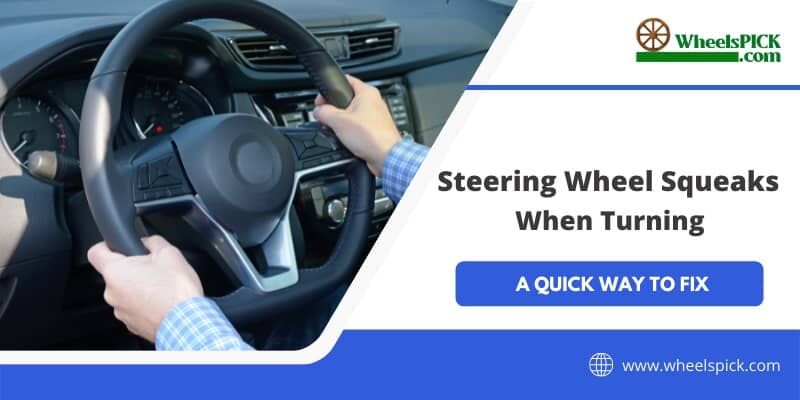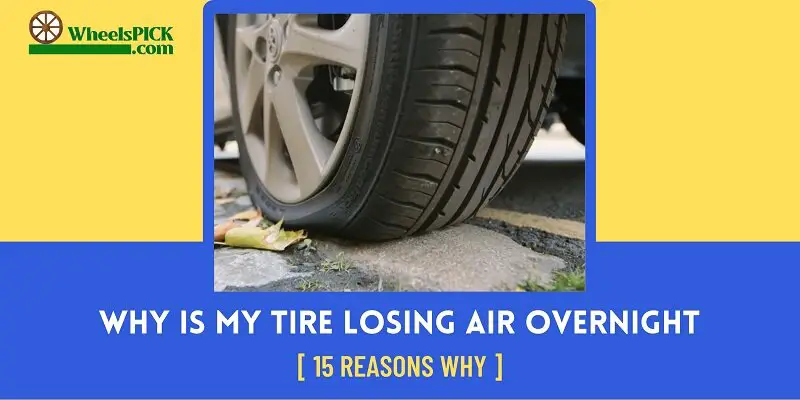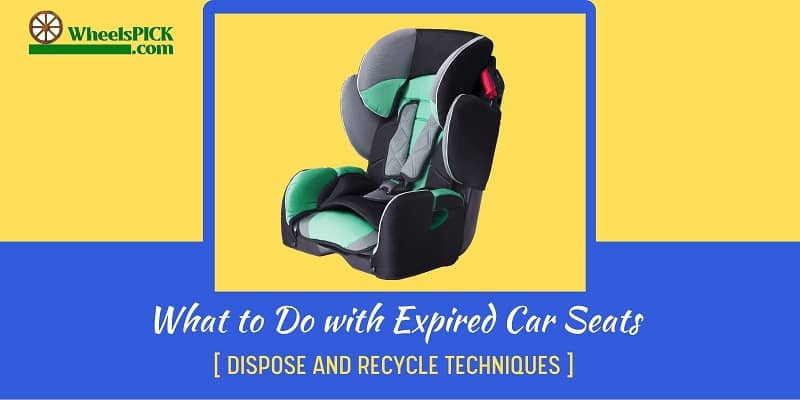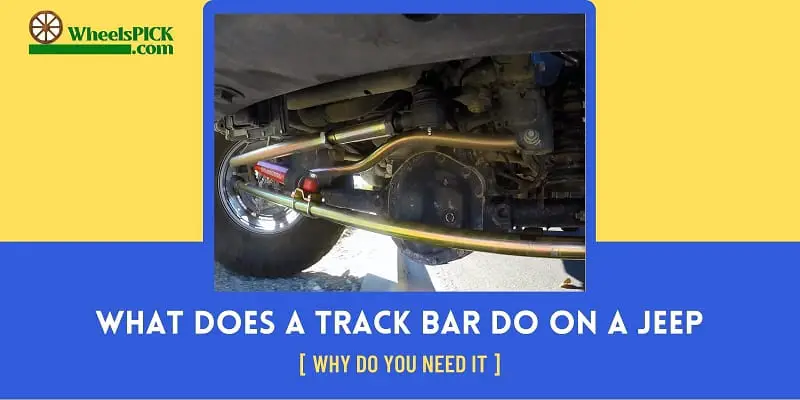Have you become hopeless about finding the correct fit for your car seats? We’ve all been there, and it’s incredibly frustrating. But, before you give up for the last time, stick around with us because we know how to make car seat covers fit better.
Yes, you read that right!
It’s always a pain to find the best material and quality for car seat covers, but what’s worst is that sometimes even the most hyped and reviewed brands fail to have the finest fit. So, what to do? How to protect your car seats from their ultimate demise? Hold your horses!
We will discuss it all. So, without further ado, let’s see how you can get a snug fit cover for your car seats without the struggles of tugging or pulling.
How To Make Car Seat Covers Fit Tight
The general way to get the best snug fit is to tuck and tie down all the straps of the seat covers. Ensure to run your hands and straighten the creases before the final installation. However, even this simplest way sometimes wouldn’t give you a tight or snug fit. Thus, keep reading to know more about how to make car seat covers fit better!
How Do I Keep My Seat Covers From Sliding?
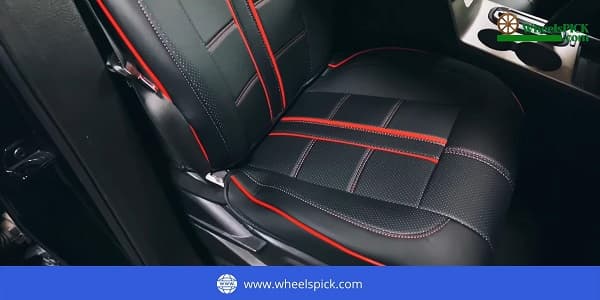
Ever felt yourself slipping even though you have covers on your leather seats? I have, and seriously, it has to stop! Here are a few ways you can try to stop this issue once and for all.
- Strong Fastenings
The first rule that users mustn’t compromise on is the strength and sturdiness of the straps and buckles that seat covers provide. Once the fasteners are firm and tight, with adequate grip, it will prevent passengers from slipping.
- Non-Slip Liners
Seat covers with non-slip liners have settings under the seats that conform to the highest snug fits. Due to the non-grip feature of the seat covers, they automatically prevent slipping.
- Non-Slip Mats
Most of the faults of the slips are due to the non-grippy resistance on your feet. You can stop sliding once the seats are non-slippery but also when your feet are secure and gripped.
- Cables & Ties
Another underlying reason for the slips is when your seat covers aren’t tight enough in the middle and top sections of the rear seats. Users can use extra cables or ties to tighten it further.
How to Make Car Seat Covers Fit Better: 7 Easy Process
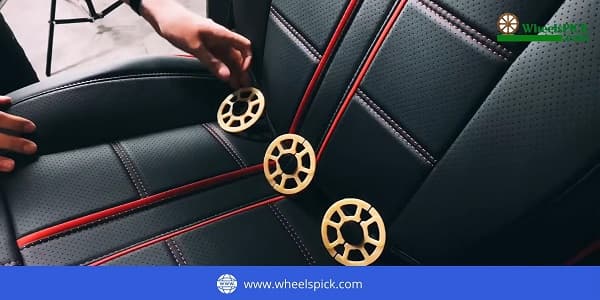
Now that we’re through some of the basics, let’s dig in deeper to know how to make car seat covers fit better, shall we?
Front Seats
- Step 1:
Start by taking off the headpiece. Cover the back rest section and slide the cover down. Pull the tassels through the front part and tie them together. - Step 2:
Cover the base section with the seat cover and hold it down nice and tight. If the fit is too loose, you might want to go back and undo the tassels from the usual Velcro attachment. Loop it through the D-ring on the seat cover’s opposite end and stick it to the tassel. Ensure that this connection is as tight as possible. - Step 3:
Slip the headrest back on, connect the straps tightly, and experience the best fit.
Rear Seats
- Step 4:
Similar to the beginning of the front seats, remove the headpiece from the rear ones to get started.Start with the back support and glide the cover down nice and tight. Pass the tassels behind the back support safely and tightly attach them around the sides. There are multiple tassels on the back support, so ensure to secure them all as tightly as possible, separately. - Step 5:
Once done, pull over the base seat cover and attach it to a snug fit. - Step 6:
Now, the rear seat cover’s base doesn’t come in velcro material like the front. Instead, they have generic tassels to accompany the attachments, which will run down the seats. Go ahead, and secure those at the bottom and side of the seats. - Step 7:
Lastly, place back the headrest and tie the velcro straps as needed.Here’s one last tip; every time you lay down the seat covers, ensure to run your hands over them to eradicate creases and uneven overlays before finally tying the knots and securing the seat covers. This gives off a much tidier look and a high snug fit.
How Do You Tighten a Car Seat Cover? Why Can’t I Tighten My Car Seat
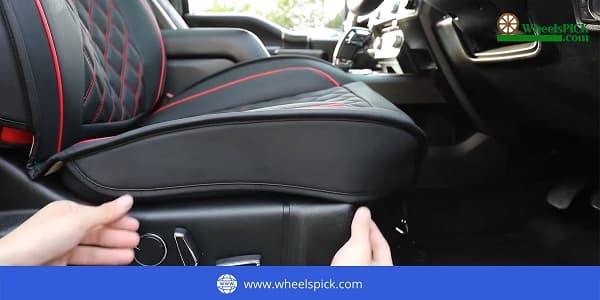
If you’re confident that you’re tugging hard enough on the car seats for a seamless fit and it’s still failing to deliver, here’s what you can do.
- Install the bottom portion of the cover seats and tightly tuck in all the corners.
- Locate the portions where the seat buckles and headrest posts are underneath and make a small incision using scissors. Tuck in all the leftover excess materials tightly.
- Remove the headrests and install the top part of the seat cover. Tie down the straps tightly.
- Attach some hooks on the backside of the back rest’s seat cover straps. Connect the hooks to one another and repeat this process for all the hooked straps for the highest snug fits.
Most parents face a loose car seat even though the covers are installed correctly. This inability can be due to obstructions within the mechanism or the cushioning.
Thus, to tighten infant car seats, parents must eradicate the seating cushion, grasp the buckle pad and remove it. Unfasten the locks, lower the frond edges and lift the cushion. As the cushions release, pull the buckle pad through the cushions to readjust.
How Are Universal Seat Covers Fixed?
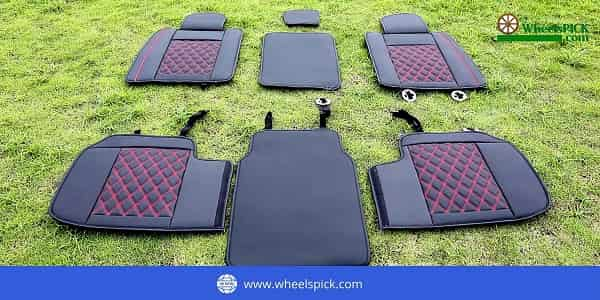
Honestly, dealing with a universal cat seat cover with poor fitting is no different than the others. You need to follow the basic 7-step process that we discussed earlier.
However, even then, if you notice that the fit is somewhat underwhelming, you will have to make a few incisions above the buckles and headrest posts that may be underneath the seat covers temporarily. After the incisions, tuck in the excess material around these areas tightly for the most refined finish and fix.
How Are Car Seat Covers Made?
Manufacturers utilize heavy-duty machinery to make seat covers. However, users also employ a few DIY methods to make their covers.
First, they purchase the cloth seats of their choice. Next, they measure the fabric according to the entire seats. And lastly, they use machines or hand-stitches to sew the material into a cover. The crucial element is the straps, which must have proper elasticity and stitch to the cover’s sides.
Types of Car Seat Covers: Which Type of Seat Covers Are Good For Car?
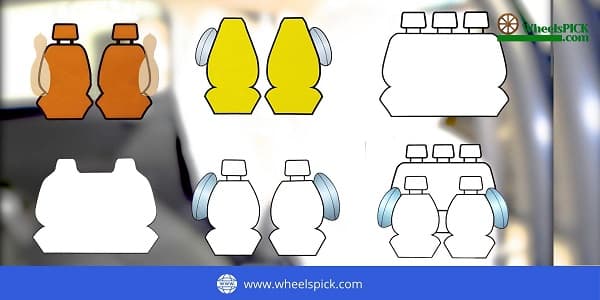
Now, there are endless materials to choose from for your car covers. But, which is the best? First, let’s see the most-used materials and then boil down the best choices.
- Velour
- Suede
- Sheepskin
- Saddle Blanket
- Neoprene
- Leather
- Ballistic Nylon
The best alternative for users is sheepskin covers, which are the warmest for colder regions. But, they’re also highly comfortable and luxurious. Since sheepskins are expensive, velour and neoprene alternatives are great too.
Neoprene has unparalleled waterproof and dirt resistance abilities, whereas velour is highly comfortable due to being extra-soft. So, it’s more of a trade that you’ll do while purchasing one material over the other.
Do All Seat Covers Fit All Cars?
Generally, universal seat covers fit most cars. But the case may vary if you own an exotic, rare, custom, or classic car model. Universal car seat covers are super affordable than custom-tailored ones. Thus, all seat covers don’t fit all types of cars, but most universals do.
What Does Universal Fit Mean for Car Seat Covers
Universal fit means that the seat covers’ design fits many car seat types. The ‘universal’ term is used literally here as they provide a snug fit for any car model type as if they were custom-tailored. Sometimes they act as a protective cover around car seats rather than owning the tightest fit that most custom seat covers have. But universal covers also have the approval of installation in all cars.
Do Universal Seat Covers Fit All Cars?
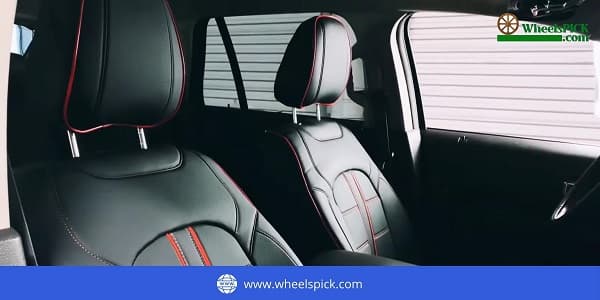
Generally, universal seat covers fit most cars. However, if you own custom sports, exotic, or classic car model, you will not find a universal fit. Thus you’ll need a customized car seat for that. On the other hand, truck and universal car seats are cheaper.
Universal seats fit wide measurements of car seats. They’re not too tight and work as a defensive drape.
10 Best Universal Car Seat Cover Comparison
In this journey of knowing how to make car seat covers fit better, we can’t fall behind by not suggesting a few top-tier performing products. So, here is their feature comparison, so you have a clearer picture.
| Brands | Feature Comparisons |
|---|---|
| EKR Leatherette | PU leather, snug fit,7 colors, microsuede inserts |
| Black Panther Car Seat Covers | Faux PU leather, 6 colors, breathable material, rubber granule fabric |
| FH Group Seat Covers | 9 colors, universal fit, breathable material, adjustable straps, pocket storage |
| PIC Auto Mesh Universal Car Seat | Faux leather, stylish patterns, high-quality breathable, stretchy fabric, comes with 1 rear, 2 front low and 5 head covers |
| West Llama PU Leather Car Seats | Leather, for front seats, water-resistant PU leather, easy 10-minute installation |
| Covercraft Carhartt Seat Save | Heavy-duty duck-weave fabric, sun and dirt-resistant, equipped with seat airbags |
| EKR Custom Fit Car Seat Cover | 4-layer construction, high durability, breathable material, secure fit, quality zippers and buckles |
| FH Group Ultra Comfort Car Seat Cover | Faux leather, non-slip and high density foam, silicon interior, elastic trim edges |
| Front Seats Shear Comfort Custom Cordura Seat Cover | Cordura shear material, 3 adjustable headrests, heavy-duty waterproof material |
| Coverado Car Seat Cover | Waterproof nappa leather, luxury design, universal fit, superior protection, easy-to-install |
Difference Between A Custom Seat Cover And A Universal Seat Cover?
Choosing the right seat cover for your vehicle can significantly impact your driving experience and the longevity of your car’s interior. When it comes to selecting seat covers, the two primary options are custom seat covers and universal seat covers. While both serve the purpose of protecting your seats, they offer different benefits and features. Understanding these differences will help you make an informed decision tailored to your needs.
Definition and Fit
Custom Seat Covers
Custom seat covers are designed specifically for the make, model, and year of your vehicle. This bespoke approach ensures a perfect fit, contouring precisely to your car’s seats. They take into account the seat shape, headrests, armrests, and any other unique features of your vehicle’s seating.
Universal Seat Covers
Universal seat covers, on the other hand, are designed to fit a wide range of vehicles. They come in standard sizes and shapes, making them a more versatile but less tailored option. While they are easier to purchase and often cheaper, they may not fit as snugly as custom covers.
Material and Quality
Custom Seat Covers
With custom seat covers, you have a wide array of material options, including leather, neoprene, and velour. The quality tends to be higher as these covers are crafted to last and match the specific dimensions of your seats. The precise fit ensures that the cover stays in place and wears evenly over time.
Universal Seat Covers
Universal seat covers are typically made from more generic materials like polyester or blended fabrics. While some high-quality options exist, they generally do not offer the same level of durability or aesthetic appeal as custom covers. The fit might be loose or tight in certain areas, leading to uneven wear and potential discomfort.
Installation and Maintenance
Custom Seat Covers
Installation of custom seat covers can be more complex, as they are designed to fit precisely. However, once installed, they require minimal adjustments. Maintenance is straightforward as they fit well and don’t shift around, reducing the accumulation of dirt and debris underneath.
Universal Seat Covers
Universal seat covers are generally easier to install due to their one-size-fits-all nature. However, they may require frequent adjustments to keep them in place. Cleaning can also be more challenging if the cover does not fit tightly, allowing dirt to get trapped beneath.
Aesthetic and Comfort
Custom Seat Covers
The tailored fit of custom seat covers enhances the overall look of your vehicle’s interior, providing a sleek, seamless appearance. They can be customized with various colors, patterns, and logos, offering a personalized touch. Comfort is also superior due to the precise fit and high-quality materials used.
Universal Seat Covers
Universal seat covers offer a more generic look and might not complement your car’s interior as well. While they can improve comfort compared to no cover at all, the fit may not be as ergonomic, leading to potential discomfort over long periods.
Cost Comparison
| Feature | Custom Seat Covers | Universal Seat Covers |
|---|---|---|
| Fit | Perfect, vehicle-specific | Generic, one-size-fits-most |
| Material Options | Wide range, high-quality | Limited, variable quality |
| Installation | Complex, precise | Easy, adjustable |
| Maintenance | Low, stays in place | High, frequent adjustments |
| Aesthetic Appeal | High, tailored look | Moderate, generic look |
| Comfort | High, ergonomic fit | Moderate, can be loose |
| Price Range | $$ – $$$$ | $ – $$ |
Durability and Longevity
Custom Seat Covers
Custom seat covers are typically built to last. The materials used and the perfect fit reduce wear and tear, ensuring that the covers stay in good condition for many years. They are an excellent long-term investment, particularly if you plan to keep your vehicle for an extended period.
Universal Seat Covers
The durability of universal seat covers can vary greatly depending on the material and brand. Generally, they do not last as long as custom covers due to the less precise fit and lower-quality materials. They are a good temporary solution but may need replacing more frequently.
When deciding between custom and universal seat covers, consider your priorities. If you value a perfect fit, high-quality materials, and a tailored look, custom seat covers are the way to go. They are an investment in the longevity and aesthetics of your vehicle. However, if you need a quick, affordable solution that fits a variety of vehicles, universal seat covers can serve your needs adequately.
By weighing the differences in fit, material, installation, maintenance, aesthetics, cost, and durability, you can select the seat cover that best suits your vehicle and lifestyle. Whether you opt for the precision of custom covers or the versatility of universal ones, protecting your car’s seats is always a wise choice.
How To Buy Car Seat Covers
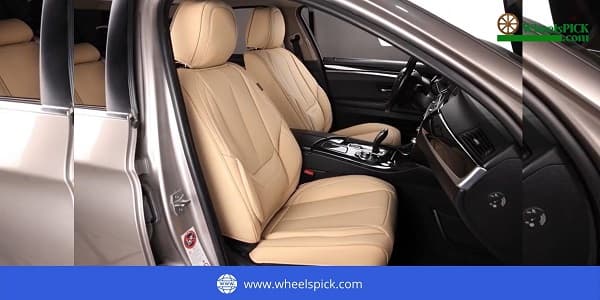
Now that we understand most of the basics let’s get down to what you need to consider before purchasing a car seat cover. Here are top three simple notes to remember.
- Material: There’s a wide range of materials to opt from in car seats. Consider your region, the weather, humidity, and budget before settling on a material.
- Color: Now, this is important as most of us are adamant about finding the exact shade of seat cover that will not diverge too much from the original seats.
- Comfort: Some car seats are durable, breathable, comfortable, sturdy, or all. Now, it boils down to your preference in choosing the focus feature.
How Much Does It Cost to Install Car Seat Covers?
Usually, professional shops may charge around $100 to $800 to install a custom seat cover, depending on the material, car type, etc. In contrast, you can get the job done by a professional within $200 to $300 if it’s a store-bought, universal cover.
How to Install Universal Seat Cover
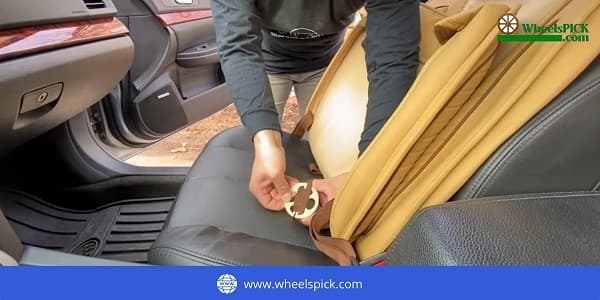
Worried about replacing or installing the seat covers? Don’t! Simply follow these steps.
- The first step is to untie each of the tassels and remove the old seat cover.
- Next, if your front seats have airbags, install the covers through the right side. Sizes 60 or 60/25 can glide over the headrest without an issue. However, if you’re using sizes 30 or 30/45, you’ll have to detach the headrests first.
- Pull over the new covers on and over the seats before pulling the bottom half over the base.
- Locate the straps underneath the seat and poke them through its back. Now simply hook or fasten the straps.
- Finally, fit the headrest covers and replace it atop the seats, and voila!
What Are Your Options If the Universal Seat Covers Don’t Fit Your Car?
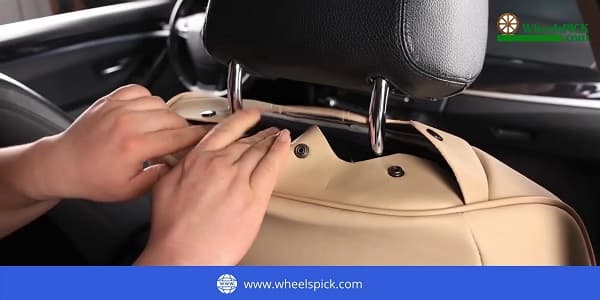
Let’s say, even after a million tries, your universal cover isn’t fitting well. What are your other options? Let’s take a look!
- Adjust the car seat or take advice from the manufacturer on its adjustments.
- Utilize a plastic screwdriver to adjust the cover and resettle it for the best fit.
- Unzip and move around the cover for a better adjustment.
- Always purchase a cover based on your car’s seat measurements.
- Get a custom seat cover!
What’s The Best Way to Ensure That My Seat Covers Fit Perfectly?
When it comes to protecting your vehicle’s interior, seat covers are a crucial investment. They not only shield your seats from wear and tear but also add a personal touch to your car’s interior. However, achieving a perfect fit can be challenging. Here’s a comprehensive guide to ensure your seat covers fit like a glove.
Understanding Your Vehicle’s Seats
The first step to ensuring a perfect fit is understanding the type of seats in your vehicle. Car seats vary significantly between different makes and models. Here are some key factors to consider:
- Seat Shape and Size: Seats can be bucket, bench, split-bench, or captain’s chairs, each with unique dimensions.
- Headrests and Armrests: Some seats come with adjustable or detachable headrests and armrests, which can affect the fit of the covers.
- Seat Features: Consider built-in features like lumbar support, airbags, and seat controls. These must be accommodated by your seat covers.
Measuring Your Seats Accurately
Accurate measurements are essential to ensure a snug fit. Here’s how to measure your seats correctly:
- Seat Width and Depth: Measure the width from the left edge to the right edge of the seat. For depth, measure from the front edge to the backrest.
- Backrest Height and Width: Measure the height from the top of the seat to where it meets the bottom, and the width across the backrest.
- Headrest Dimensions: Measure the height and width of the headrest separately if it’s detachable.
Choosing the Right Type of Seat Covers
Different materials and designs can affect the fit and function of seat covers. Here are some popular options:
- Custom-Fit Seat Covers: Made specifically for your vehicle’s make and model, ensuring a precise fit. These are usually the best option for a seamless look.
- Semi-Custom Seat Covers: Designed to fit a range of seat types and sizes, offering a balance between fit and cost.
- Universal Seat Covers: One-size-fits-all solutions that may not provide the best fit but are the most economical.
Installing Your Seat Covers Properly
Proper installation is crucial to achieving a perfect fit. Follow these steps for the best results:
- Preparation: Clean your seats thoroughly to ensure no dirt or debris interferes with the fit.
- Aligning the Cover: Start by aligning the cover with the seat, making sure all parts correspond correctly (e.g., headrest holes).
- Securing the Cover: Follow the manufacturer’s instructions to secure the cover. This often involves tucking fabric into crevices and securing straps underneath the seat.
- Adjustments: Make any necessary adjustments to ensure there are no wrinkles or loose areas. Tighten all straps and check that the cover is securely in place.
Tips for Maintaining a Perfect Fit Over Time
Once you’ve achieved the perfect fit, maintenance is key to keeping it that way:
- Regular Adjustments: Seat covers can shift over time, especially with frequent use. Regularly adjust and retighten to maintain the fit.
- Cleaning: Follow the manufacturer’s cleaning instructions. Some covers are machine washable, while others require spot cleaning.
- Protect from Sun Damage: UV rays can deteriorate materials over time. Use sun shades or park in shaded areas to protect your seat covers.
Troubleshooting Common Fit Issues
Even with careful measurement and installation, you might encounter some fit issues. Here’s how to address them:
- Loose Areas: Check for hidden straps or adjustment points you might have missed. Adding foam padding can help fill any gaps.
- Wrinkles: Use a handheld steamer to smooth out fabric wrinkles. Ensure the cover is tightly secured.
- Misaligned Openings: If seat belt or headrest openings don’t align properly, recheck your installation steps and adjust accordingly.
Ensuring that your seat covers fit perfectly involves a combination of precise measurements, choosing the right type of covers, and careful installation. By understanding your vehicle’s specific needs and following these detailed steps, you can achieve a seamless, protective, and aesthetically pleasing fit for your seat covers. Regular maintenance and prompt troubleshooting will keep them looking and functioning like new for years to come.
How to Make Seat Covers Fit Tight
Ensuring your car seat covers fit snugly is crucial for both aesthetics and functionality. Loose seat covers can be uncomfortable, shift around, and fail to provide the protection your seats need. Here’s a comprehensive guide on how to make seat covers fit tightly.
1. Choosing the Right Seat Covers
The first step to achieving a tight fit is selecting the correct seat covers. Consider the following factors:
- Vehicle-Specific Covers: Opt for covers designed specifically for your car’s make and model. Universal covers may not provide the same level of fit.
- Material: Choose materials that offer a bit of stretch, like neoprene or polyester blends. These fabrics conform better to seat contours.
- Design Features: Look for covers with adjustable straps, elastic hems, and hooks. These features help secure the covers more effectively.
2. Preparing the Seats
Before installing the seat covers, prepare your car seats to ensure a smooth application:
- Clean the Seats: Remove any dirt, dust, and debris from the seats. Use a vacuum cleaner and a mild upholstery cleaner to ensure a clean surface.
- Remove Headrests: Take off the headrests to make it easier to fit the covers. This step is essential for a seamless installation.
3. Installation Process
Follow these steps to install the seat covers tightly:
a. Positioning the Cover
- Align the Cover: Place the cover over the seat, ensuring that it is aligned correctly with the seat’s contours.
- Tuck and Smooth: Smooth out the cover, tucking it into the crevices between the seat and the backrest. This helps eliminate wrinkles and ensures a snug fit.
b. Securing the Cover
- Straps and Hooks: Use the straps and hooks provided with the cover. Attach them securely under the seat, tightening them as much as possible.
- Elastic Hem: If the cover has an elastic hem, make sure it is pulled tightly around the bottom of the seat. This will help hold the cover in place.
4. Additional Tips for a Tighter Fit
- Foam Inserts: Use foam inserts to fill any gaps between the seat and the cover. This not only improves the fit but also enhances comfort.
- Double-Check the Fit: After installation, sit on the seat to ensure the cover doesn’t shift. If it does, adjust the straps and re-tuck any loose areas.
- Heat Treatment: For fabric covers, using a hairdryer on a low setting can help the material conform to the seat’s shape. Be careful not to overheat the material.
5. Maintaining the Fit
Once your seat covers are installed, maintaining their fit is key to long-term satisfaction:
- Regular Adjustments: Periodically check and tighten the straps and hooks. Regular adjustments prevent the covers from loosening over time.
- Cleaning: Clean the seat covers as per the manufacturer’s instructions. Dirty covers can stretch out and lose their tight fit.
- Avoid Excessive Weight: Be mindful of not placing heavy objects on the seats, as this can cause the covers to shift and stretch.
6. Troubleshooting Common Issues
Even with careful installation, you might encounter some common issues:
- Wrinkles and Bunching: Use foam inserts and smooth out the cover regularly to prevent wrinkles.
- Slipping Covers: Ensure all straps and hooks are secure. If the problem persists, consider adding extra Velcro strips for additional grip.
- Misalignment: Double-check the alignment of the cover with the seat. Sometimes a slight shift can cause the cover to misalign.
Achieving a tight fit for your seat covers enhances both the look and functionality of your car’s interior. By choosing the right covers, preparing the seats properly, following a detailed installation process, and maintaining the fit, you can ensure that your seat covers stay snug and secure. Follow these steps to enjoy a comfortable and stylish driving experience.
Safety of Custom Fit and Universal Seat Covers
Let’s face it; sometimes, inexpensive car seats are the way to go. Although universal seats have applicability limits and are not for vehicles with airbags, they still provide undivided protection.
Manufacturers design seats with side impact protective mechanisms whereas, in custom covers, the design only applies to a specific car type with mounted seat airbags.
Moreover, it’s a big no-no to drive around with seat covers that bunch up beneath the seat for safety and uncomfortable reasons. Therefore, the best-fitted shape and size are necessary.
Final Thoughts
So here are two mistakes that you must avoid; purchasing a cover that’s too big or small. Excess material doesn’t necessarily mean you’ll have extra clothing to tie around. And, a smaller cover doesn’t necessarily always mean a snug fit.
So, how to make car seat covers fit better? Follow our simple steps! Moreover, it’ll help a fortune if you commit to extensive research hours before purchasing a seat cover. Even with the best brands, the quality and fit can sometimes be all over the place.
Now, just because the fit may be inadequate sometimes, don’t let this demotivate. Car seats, when installed perfectly, can provide top-tier protective qualities – which, let’s face it – is a must-have!

